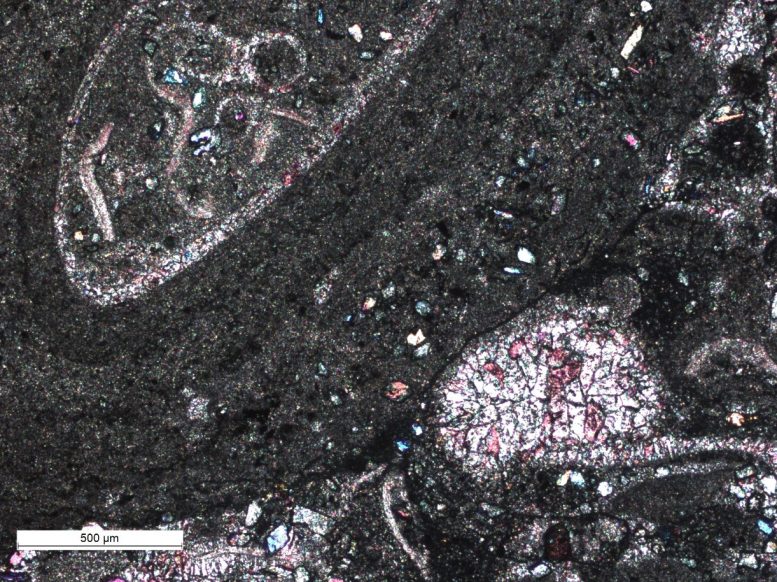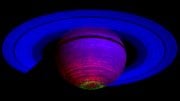
A dolomite sample from the Cambrian Muav formation was seen through a microscope. Multiple generations of mineral growth can be seen. In the study we used a laser-ablation system to sample specific mineral fabrics and measure their U- and Pb compositions. Credit: Uri Ryb
A recent study presents an innovative use of dolomite U-Pb geochronology, offering fresh insights into the development of ancient marine ecosystems. Through identifying variations in the U-Pb ratios of dolomite samples, researchers have established a dependable method for estimating the oxygen levels in ancient marine settings, crucial environments where the earliest animals originated and developed.
Their findings reveal a significant rise in marine oxygenation during the Late Paleozoic era (400 million years ago), hundreds of millions of years after the emergence of animal life. These findings suggest that early animals have evolved in oceans that were mostly oxygen-poor, and deepen our understanding of interactions between ecosystems and the evolution of complex life forms. Understanding these relationships provides critical context for future observations of exoplanet’s atmospheres using the new generation of space telescopes in search for extra-terrestrial life.
A Novel Approach to Marine Oxygenation
Dr. Uri Ryb and Dr. Michal Ben-Israel from the Institute of Earth Sciences at the Hebrew University, along with their collaborators, have made an important discovery in Earth sciences. Their study, published in Nature Communications, introduces a new approach to reconstruct the rise of oxygen in ancient marine environments using U and Pb measurements in dolomite rocks spanning the last 1.2 billion years.

Showing the Paleozoic sedimentary rock sequence at the Grand Canyon – from which samples were collected for this study. The steep cliffs are of marine limestone or dolomite formations. Credit: Uri Ryb
Scientists commonly estimated the oxygen levels in ancient oceans from the composition of ‘redox-sensitive’ elements preserved in ancient sedimentary rocks. But, these compositions can be easily altered in the course of geological history. The team overcame this challenge by developing a new approach that uses dolomite U-Pb dating to detect signals of oxygenation that are resistant to such alteration, giving us an unbiased perspective on marine oxygenation dynamics.
Insights on Ancient Marine Oxygenation
Their record indicates a dramatic increase in the oxygenation of the oceans during the Late Paleozoic era, hundreds of millions of years after the emergence of the first animals. This aligns with other evidence indicating the oxygenation of the ocean at the same time, supports the hypothesis that animals have evolved in oceans that were mostly oxygen-limited, and suggests that changes in ocean oxygen were driven by evolution.
According to Dr. Ryb, these discoveries not only enhance our understanding of ancient Earth ecosystems but also have implications for the search of extraterrestrial life. “Revealing the dynamics between evolution and oxygen levels in early Earth environments can put observations on the atmospheric composition of exoplanets that now become available through the new generation of space telescopes in context. Specifically, suggesting that low levels of oxygen are sufficient for complex life-forms to thrive.”
Reference: “Late Paleozoic oxygenation of marine environments supported by dolomite U-Pb dating” by Michal Ben-Israel, Robert M. Holder, Lyle L. Nelson, Emily F. Smith, Andrew R. C. Kylander-Clark and Uri Ryb, 3 April 2024, Nature Communications.
DOI: 10.1038/s41467-024-46660-7
The study was funded by the Israel Science Foundation and the Johns Hopkins University.









Be the first to comment on "Evolving in Shadows: The Oxygen-Poor Origins of Complex Life"